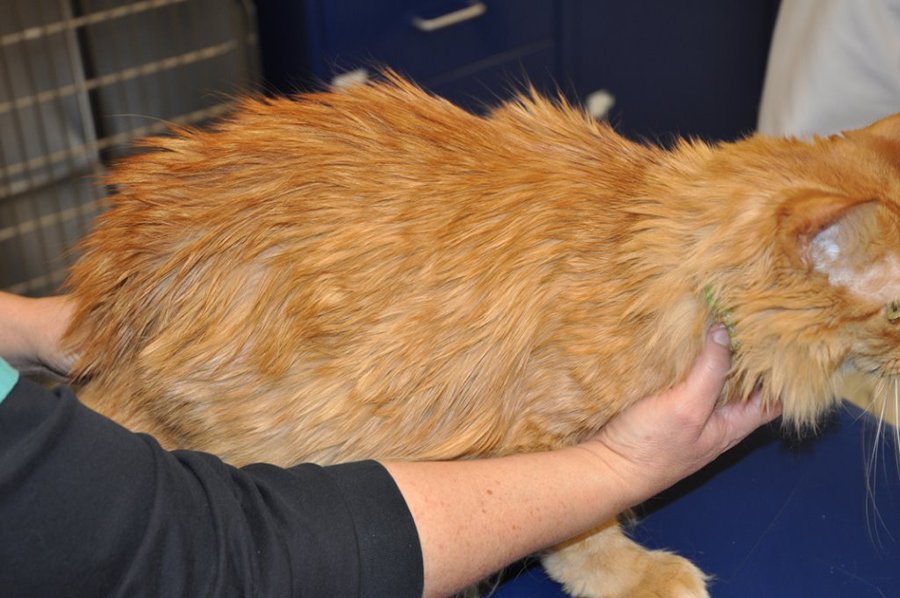Your cat has always sported a shiny coat, soft to the touch. You marvel at the time he dedicates to grooming. But lately when you pet him, his coat feels greasy and you detect an odor. His grooming clearly is off, and it’s a worry.
“The hair coat can tell a lot about the health, lifestyle and nutrition of an animal,” says dermatologist William H, Miller, VMD, at Cornell University College of Veterinary Medicine. “In cats, one of the earliest signs that the cat isn’t feeling well is decreased grooming.”
Medium- to long-haired cats are more likely to develop oily coats than shorthaired ones because the coats’ length can make it harder for the cat to groom away excessive grease, Dr. Miller says.
Lack of Flexibility.
Grooming can also be difficult for extremely overweight or arthritic cats. They may have limited flexibility to reach all parts of their body or may be unable or unwilling to use their barbed tongue to evenly distribute the natural oils in their fur. Cats with cognitive dysfunction — the feline equivalent of Alzheimer’s in people — may simply forget to groom themselves.
Surprisingly, topical flea and tick preventives can cause oily coats in some cats, especially in the shoulder area. The products contain diffusing agents which can cause excessive greasiness in these cats. Other causes include:
1. Hyperthyroidism, a common disease in middle-aged and older cats. Signs of increased thyroid hormones are a flaky, greasy or matted coat.
2. Primary seborrhea, a rare, inherited skin condition resulting in a dry or greasy hair coat. Himalayans and Exotic Shorthaired breeds are more at risk. Secondary seborrhea is caused by parasites, nutrient deficiencies or allergies.
3. Gastrointestinal disorders. “Some animals do not process nutrients properly and develop an unthrifty [unhealthy] coat with either flaking or greasiness,” says Dr. Miller.
4. Allergic reactions to certain foods or the environment. “Allergic reactions can result in an altered skin ecology that favors a bacterial or yeast overgrowth. The overgrowth of these organisms can alter the normal lipid layer of the skin and make the coat feel greasy,” Dr. Miller says. The overgrowth of both organisms can result in a pronounced body odor, and cats can become itchy with all of the consequences that itching produces.”
William H. Miller

A veterinary visit is in order at the first sign of a decline in coat quality. A diagnosis can reduce your cat’s discomfort and improve his chances for a quicker recovery. In some cases, his veterinarian may perform a skin biopsy to diagnose the possible underlying medical cause, and if it can’t be quickly identified, make a referral to a dermatologist.
Treatment is easy if the cause for the greasiness can be found and corrected quickly. In these cases, the greasiness will disappear spontaneously. “When the cause cannot be found or corrected, the cat’s owner will have to take over the grooming role,” Dr. Miller says. “Bathing is the best way to remove the greasiness, but many cats fail to see the sense of humor of a bath. Frequent brushing will also work but takes more time to achieve the desired results. If there is a bacterial or yeast overgrowth and medicated shampoos can’t be used, the cat will have to be treated with a systemic antibiotic or antifungal.”




